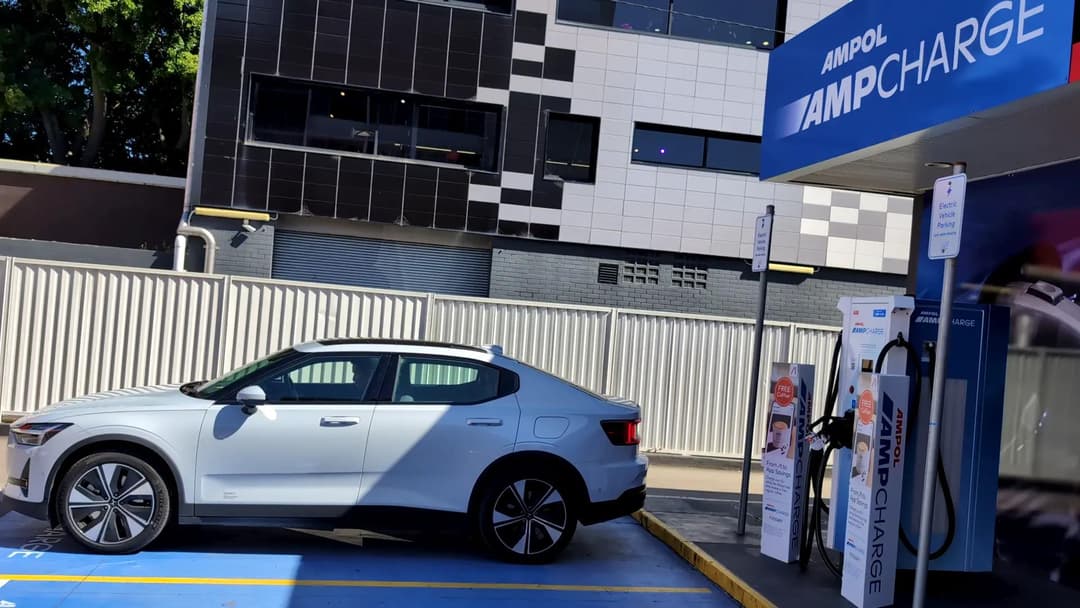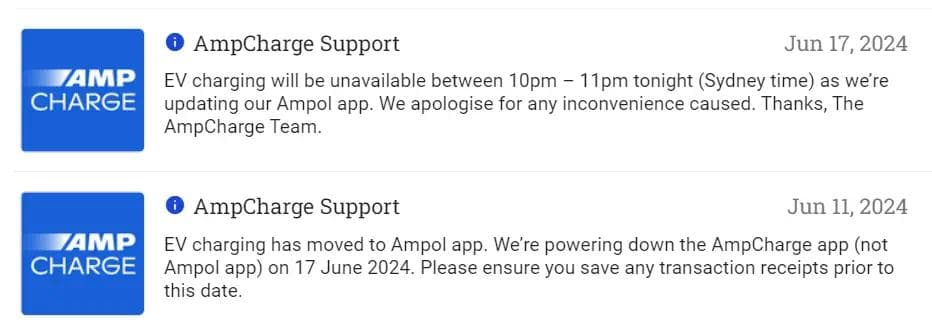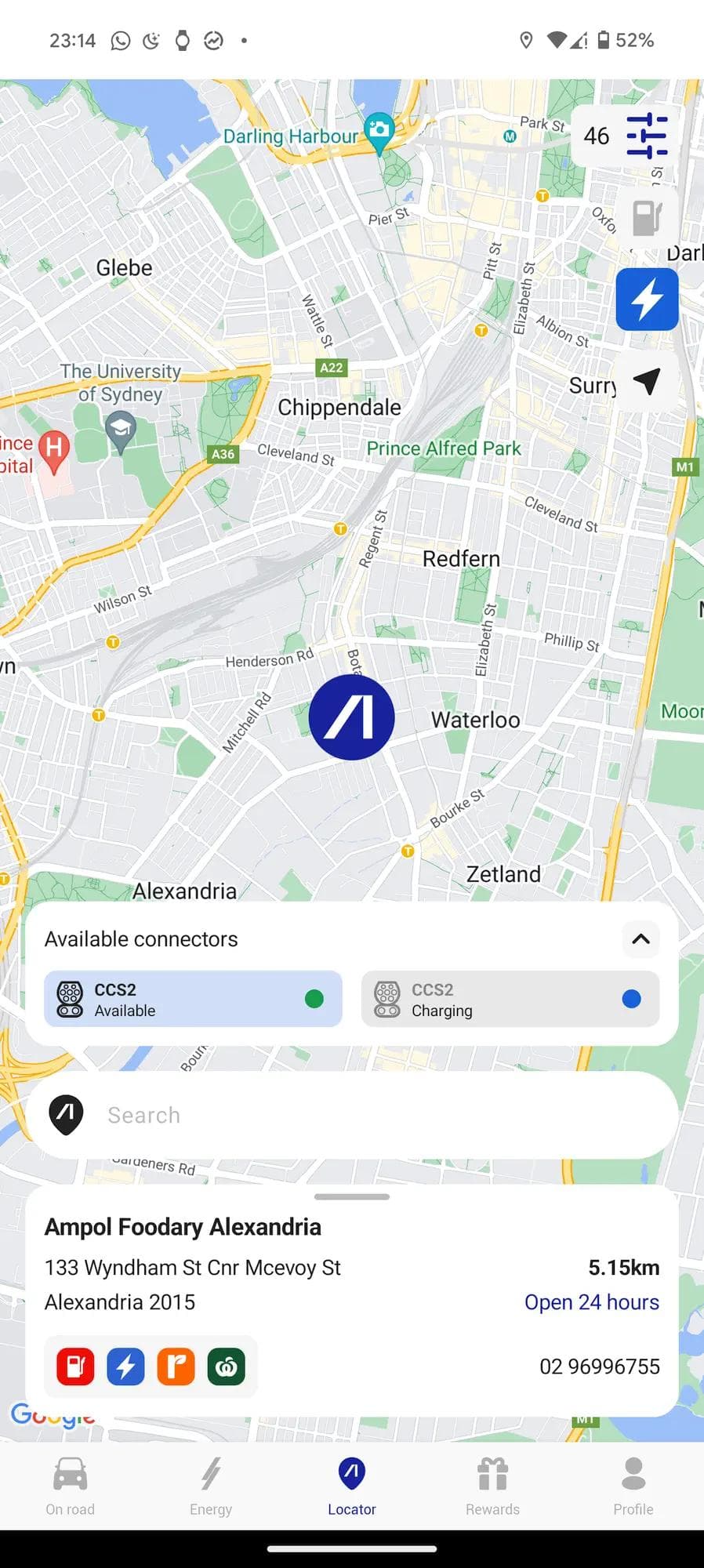I usually drive straight past Ampol Ampcharge fast EV chargers because the customer experience is poor in several ways. Let me explain...

Ampol App
The first reason is the Ampol app which is terrible even though from memory it's their third attempt at an EV charging app.

I'm not kidding when I visited Ampol Alexandria a few weeks ago to take photos for this video I found a distressed tourist in a rented Polestar 2 trying to figure out how to use the Ampol app.
The app wouldn't work on his South Korean phone so I gave him instructions to go to IKEA Tempe where he had the choice of good quality easy to use fast DC Evie Networks chargers or slow AC Chargefox chargers, as well as access to toilets and decent food.

Most EVs Get Half Advertised Charge Rate
The second problem is that at many Ampol Ampcharge locations only 800V EVs like the Hyundai Ioniq 5 get the maximum advertised charging rate eg: 150kW or 180kW.
Much more common 400V EVs like the Tesla Model Y, Polestar 2 and MG4 get roughly half the charging rate at these Ampol locations (about 75-80kW).
Some other charging networks like RAA Chargefox in South Australia also have two tier charging rates for 800V (150-200kW max) and 400V EVs (120-125kW max).
However I don't have a problem with the RAA charger and cable design because it enables 400V EVs to achieve a quite decent fast peak charge rate well above 100kW.

An Ampol spokesperson sent me a comment about this:
"All our DC chargers provide the full supported output range of up to 920Vdc. Some of our chargers do have low current cables (200A) in order to help improve overall usability and reliability for individual and concurrent usage at each charging point".
"With the low current cables if your vehicle's battery voltage is 800V then you should be able to get up to 150kW of power under the right conditions. If your vehicle's battery voltage is 400V then this would likely be closer to 75kW".
"However, charging times are not guaranteed and can depend on your vehicle's battery size, your vehicle's charging capacity, the charge state of your battery and weather conditions".
"We remain focused on providing a strong customer experience as people transition to EVs. All things considered, we feel higher current cables can have a detrimental effect on customer experience, reliability and safety given their weight".
"We are consistently monitoring customer feedback as well as technological advancements to ensure we get the balance right".
No RFID Support
Another reason to skip Ampol AmpCharge is because they don't support starting and stopping a charge session with an RFID Card even though competitors BP, Evie and Chargefox all support RFID.
RFID support makes a fast charger much easier to use and it is so much easier than unlocking your phone, logging in to an app and going through menus.
RFID support also means that EV drivers don't need to worry about getting a mobile data signal at the charging location to be able to use a charging app.
Advantages of EV Chargers at Service Stations
Before readers say I'm being unfair in my review, traditional service station brands like Ampol Ampcharge have some advantages eg: you can buy snacks, ice, drinks, use their toilets, wash your windshield and throw trash away.
These are useful benefits offered at traditional service station style locations and on the highways Ampol Ampcharge is making a strong effort to provide lots of eating options which is useful for families, salespeople etc.
How Can Ampol Ampcharge Improve?
- Support RFID to start/stop charging sessions
- Change the design of their charging stations and cables to improve the charging rate for 400V EVs
- Improve their app experience in general and return the Ampcharge app instead of integrating EV charging into the Ampol app.
For now I would recommend skipping Ampol Ampcharge locations, use Tesla, Evie, Chargefox or NRMA instead when possible.
Customer Reviews
I asked some Australian EV drivers what they thought of Ampol Ampcharge after they saw my video.
Mark L - "The app experience, I totally understand this. However 800v vehicles have higher potential charges rates than 400v vehicles everywhere. At most 350kW chargers (with 500A maximum output) a 400v vehicle can only achieve a maximum of 200kW (if the vehicle can even achieve this) whereas 800v could potentially max out the charger. It seems that although AMPcharge have 180kW chargers they are only equipped with 200A cables".
"So I think that it really comes down to the price per kWh being appropriate for a 150kW+ ultrafast charging experience when the majority of vehicles who will use it can only achieve an 80kW fast charging experience".
Beau - "Ampol app is garbage; it's even worse than the old Ampcharge app! At least the Ampcharge app showed you exactly which sites were available and what the price was, instead of being geofenced like the Ampol app is. And after the Ampcharge app teased Autocharge, it's sad it never made it to the Ampol app... and therefore into service".
Patrick - "Nice video. RFID cards should be mandatory. Mobile no good if the battery runs out".
Mark A - "Agree combining the charging app into the main Ampol app has been poor (and worse if it's geo-restricted)".
Robbie - "Last time I was there phone reception wasn't available so no one could use the chargers. If they had RFID options it would be easier".
Brad - "Interesting this is the same site I have had issues with. Ampcharge is charging top whack for something that is inferior to almost anything else. None of them seem to deliver the speed you are supposedly paying for, unlike Evie for example. Ampcharge for me is last resort only".
Kathleen - "I haven’t personally had issues, but I’ve seen someone find out the new app wasn’t compatible with her phone when she really needed to charge! She had the old app from the last time she’d had to use them so they must have added some (needless) requirements in the new one".
About the author

Neerav Bhatt has been a technology journalist and photographer for over 20 years appearing in online, print, radio and TV media. His current focus is on helping Australians switch to electric vehicles as well as making their home fully electric, sustainable and climate resilient. Youtube: www.youtube.com/@NeeravBhatt Web: neeravbhatt.com
Stay up to date with the latest EV news
- Get the latest news and update
- New EV model releases
- Get money savings-deal
